Weizhou Island (涠洲岛), located in the Beibu Gulf off the southern coast of Guangxi Zhuang Autonomous Region, is the largest volcanic island in China. Stretching 6.5 kilometers from north to south and 6 kilometers from east to west, it covers an area of 24.74 square kilometers. The island is primarily composed of volcanic rock, with over 95% of its layers made up of volcanic materials. It is renowned for its diverse geological features, including sea erosion, sea accumulation, and lava formations, earning it the nickname “Penglai Island.”
The island is a popular destination for various recreational activities. Visitors can enjoy island exploration, sea fishing, beachcombing, and scuba diving. One of the highlights of a trip to Weizhou Island is the opportunity to cycle around the island. Renting a bicycle and leisurely riding around provides a relaxed way to take in the stunning landscapes.
Geologically, Weizhou Island has a fascinating history. About 300 million years ago, it was submerged under the sea. During the early Pleistocene epoch, approximately 2 to 1 million years ago, the area experienced four significant mantle plume events. The island’s formation can be divided into two main stages: first, underwater volcanic eruptions and sedimentation during the Quaternary period, which led to the island’s initial emergence; second, a combination of internal and external geological forces shaped the island’s current landscape.
Table of Contents
- Basic Information
- Location and Transportation
- Highlights of Weizhou Island
- Customs on Weizhou Island
- Vlog about Weizhou Island
- Map and Rcommended Routes
- Best Time to Visit
- Other Notable Attractions in Beihai
Basic Information
| Estimated Length of Tour | 1 – 2 days |
| Ticket Price | 98 RMB |
| Opening Hours | 8.00 – 18.00 (1st May – 31st October) 8.00 – 17.30 (1st November – 30th April) |
| Telephone Number | 0086-0779-6016278 |
Location and Transportation
Weizhou Island is situated in the central part of the Beibu Gulf, within the Guangxi Zhuang Autonomous Region of China. It lies to the north of Beihai City, faces the Leizhou Peninsula of Zhanjiang to the east, is adjacent to Xieyang Island to the southeast, and overlooks Hainan Island to the south. To the west, it faces Vietnam.
To reach Weizhou Island, you need to take a passenger ferry. Ticket prices are as follows:
- Class B: 120 RMB per person (one-way)
- Class A: 180 RMB per person (one-way)
- First Class: 240 RMB per person (one-way)
There are several ferry options:
- Fast Ferries: Feiyi No.1, Feige, Feida, Feiyu, Beiyou No.6, Beiyou No.8, Beiyou No.12
- Slow Ferries: Beibu Gulf No.1, Beibu Gulf No.2, Beibu Gulf No.3
Fast ferries take approximately 1 hour, while slow ferries take about 2.5 hours. During peak travel seasons or in rough weather conditions, slow ferries are often used.
Ticket sales points and operating hours are:
- International Passenger Terminal: 07:15 – 18:00
- Huamei Plaza: 07:15 – 22:00
- Wangsheng Road: 07:15 – 22:00
Highlights of Weizhou Island
San Po Temple (三婆庙)
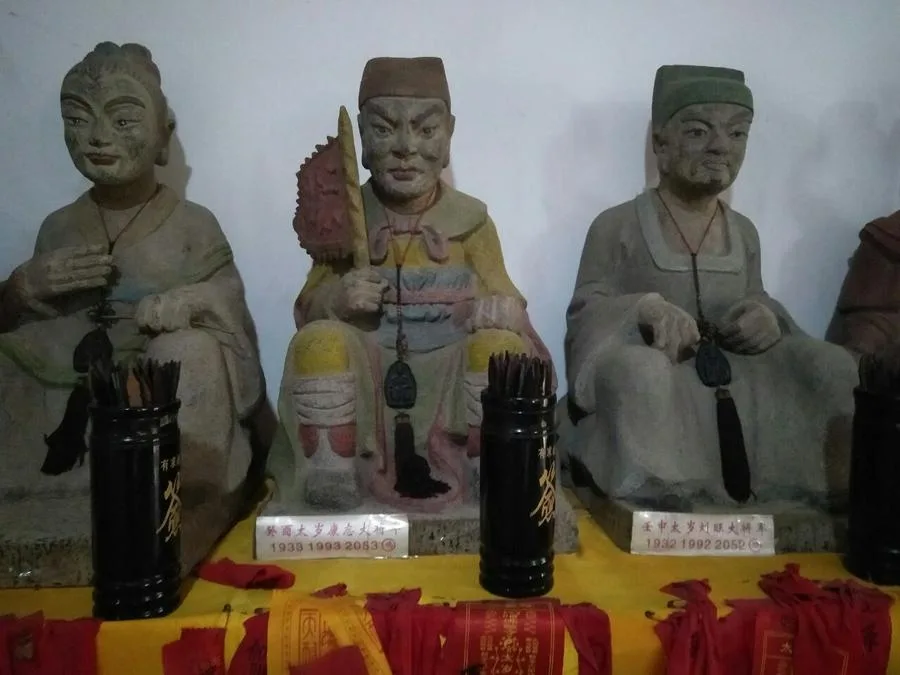
San Po Temple, also known as Hou Tian Temple, was built in the third year of the Qianlong reign during the Qing Dynasty. It ingeniously integrates with a sea-eroded cave, utilizing the natural rock formations as a protective barrier. This combination reflects the remarkable ingenuity of the island’s inhabitants. The temple is named after the Mazu temples in Fujian and Taiwan, and is steeped in enchanting legends. Surrounded by lush greenery and intersecting rock formations, the temple’s setting is serene and picturesque. Nearby, several wells, known as “Immortal Wells,” continuously spring forth with cool, refreshing water believed to have detoxifying properties. The temple remains a popular pilgrimage site, with continuous incense offerings and visitors seeking blessings.
Crocodile Mountain (鳄鱼山)

Located in the southern part of Weizhou Island, Crocodile Mountain Scenic Area encompasses Crocodile Mountain itself, the Colorful Beach, the Red Square, the South Bay Marine Sports Park, and part of the surrounding marine areas. Covering an area of 3.8 square kilometers, this scenic spot is renowned for its stunning island landscapes, distinctive volcanic geological features, and unique sea-eroded landforms. Visitors can explore a range of natural attractions, enjoy the vibrant ecology, and experience the island’s pleasant climate. The area offers a comprehensive tourism experience, combining natural beauty with recreational opportunities.
Catholic Church (天主教堂)
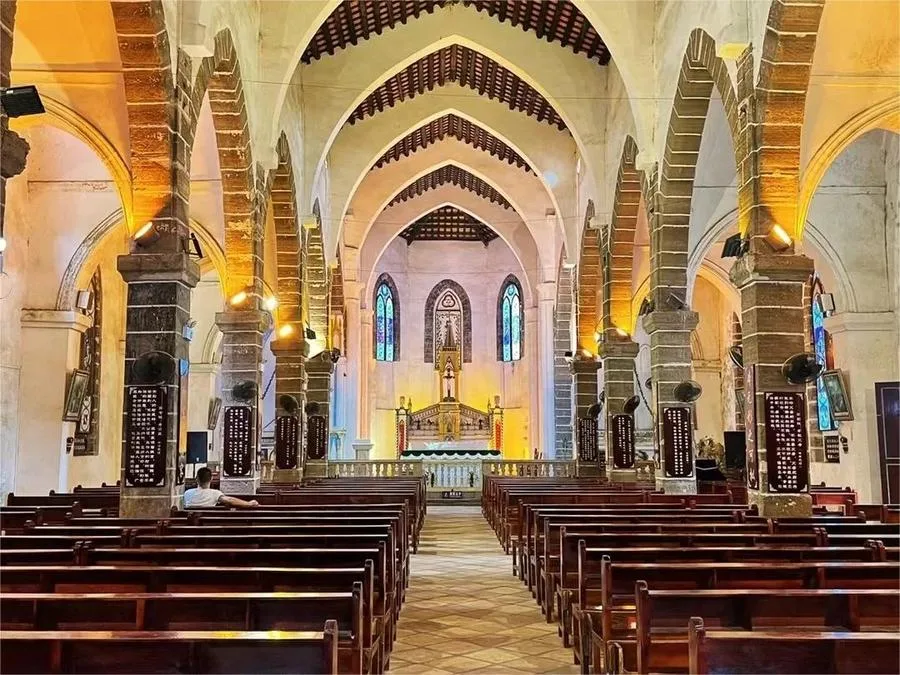
Located in Sheng Tang Village on Weizhou Island, the Catholic Church is a nationally recognized key cultural heritage site and one of the “Four Great Catholic Churches of the Late Qing Dynasty.” Established in 1853 by French missionaries from Paris, the church took ten years to complete and remains well-preserved. It is a significant historical testament to the blending of Eastern and Western cultures. Constructed primarily from coral limestone, the church features meticulous structural design and exemplifies French Gothic architecture of the Renaissance period. Its Romanesque spire, reaching skyward, creates a striking visual effect, evoking a sense of divine mystery and making it a unique architectural landmark.
Geological Park Museum (地质公园博物馆)
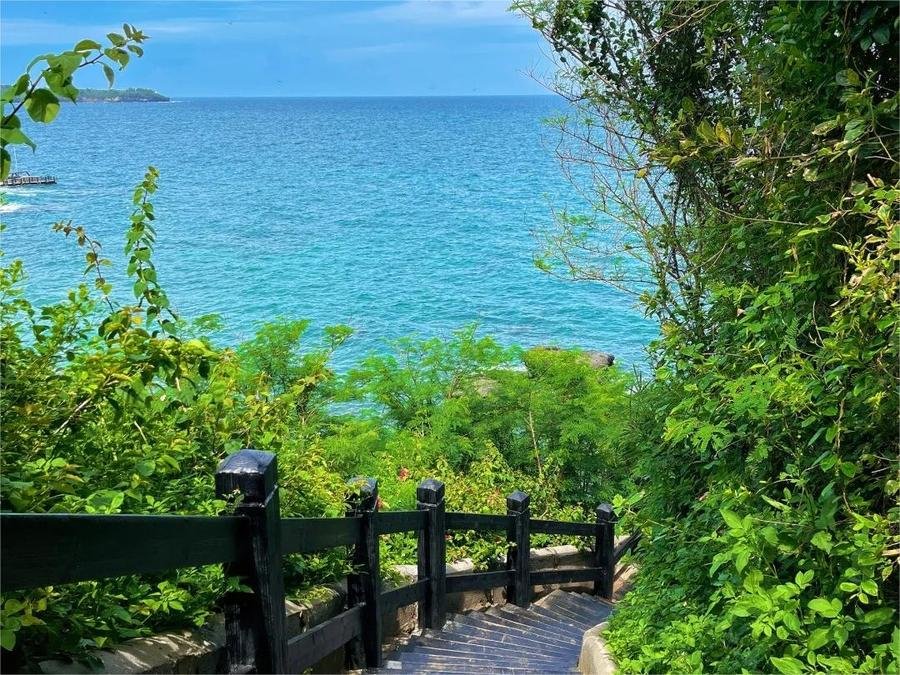
Situated on the second floor of the comprehensive building at the South Bay Crocodile Mountain Scenic Area, the Weizhou Island Volcano National Geological Park Museum spans approximately 2,000 square meters. The museum focuses on volcanic geology, featuring a range of exhibits that include maps, textual displays, and physical specimens. Utilizing modern high-tech methods such as sound and light effects, electronic sand tables, biomimicry, virtual reality, holographic projections, and QR codes, the museum highlights Weizhou Island’s volcanic island characteristics. It serves as a natural science museum that integrates volcanic geology, marine (historical) culture, research, leisure, and entertainment.
Five-Colored Beach (五彩滩)
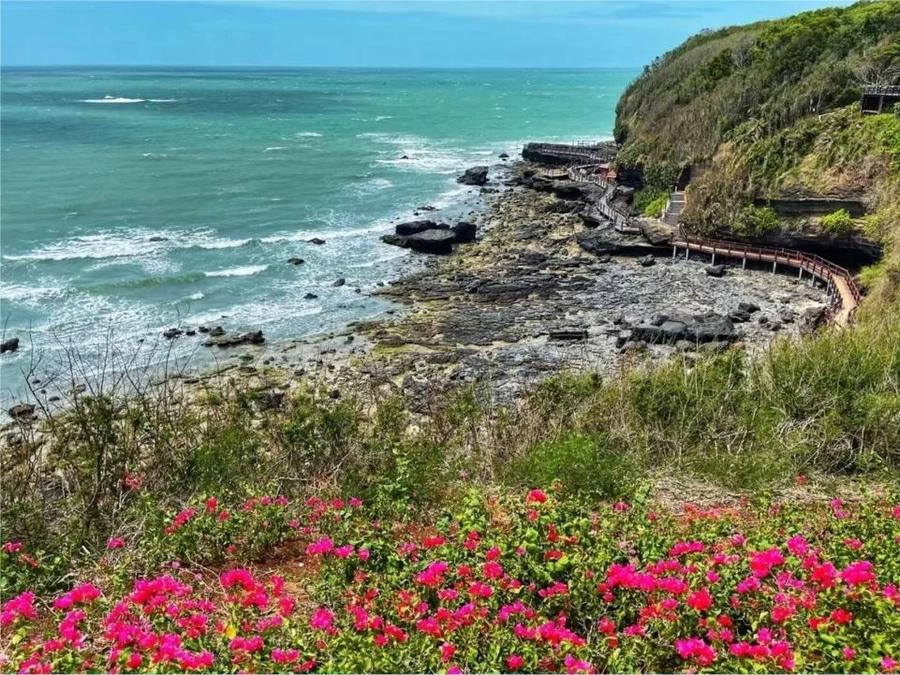
Located on the eastern part of Weizhou Island, Five-Colored Beach is renowned for its vibrant, multi-colored appearance, which emerges after the tide recedes. The exposed marine erosion platform, illuminated by sunlight, reveals a stunning palette of colors, resembling an impressionist painting. This beach is an excellent spot to watch the sunrise over the sea. During low tide, vast areas of the marine erosion platform are exposed, offering a view of the integrated geological structures of sea cliffs, sea caves, and sea erosion platforms. Visitors can also explore ancient quarries where early settlers sourced materials for construction.
Shiluokou (石螺口)
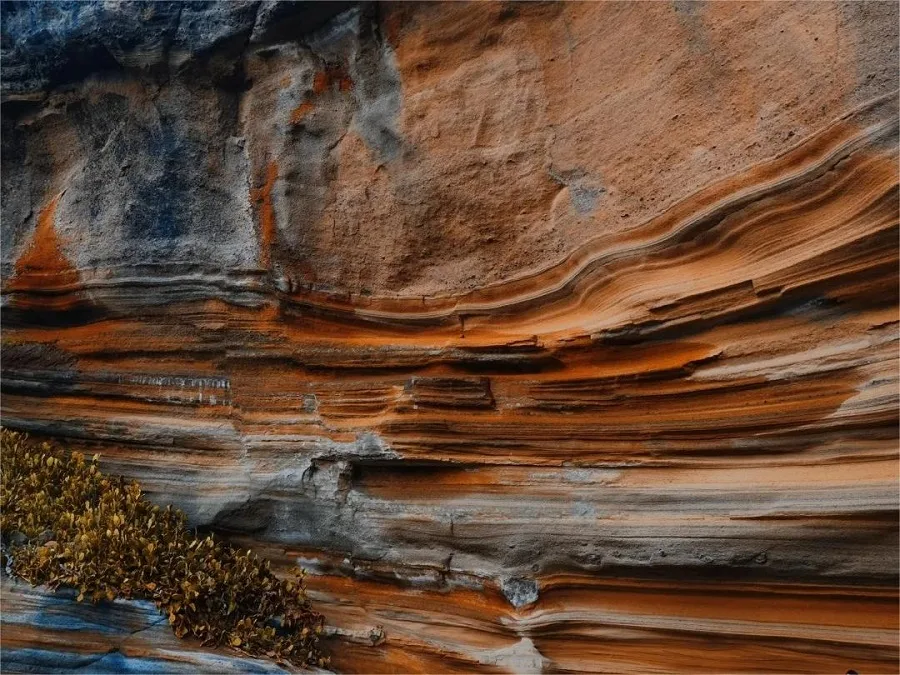
Shiluokou, named for its conch-shaped beach and the variety of sea shells found there, is a picturesque destination on Weizhou Island. The surrounding area features the island’s largest and healthiest coral reef, making it a prime location for observing vibrant marine life. Known as the most romantic western part of the island, Shiluokou attracts visitors with its unique coral sandy beach, crystal-clear waters, and ideal conditions for viewing colorful coral reefs. It is also a top spot for watching the sunset over the sea.
Dewdrop Danping (滴水丹屏)
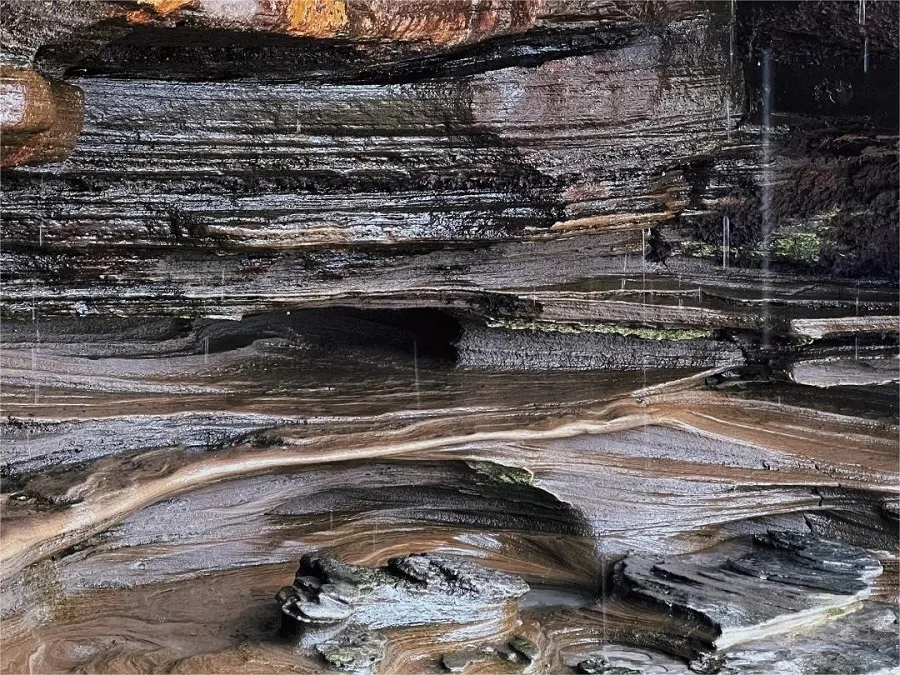
Dewdrop Danping, originally named Dewdrop Rock, is located in Dishui Village on the western part of Weizhou Island. This site features dramatic cliffs formed by marine erosion, showcasing a vivid array of colors including red, yellow, purple, green, and blue. The exposed rock layers create a striking visual effect with clear, distinct patterns. The cliff’s summit is adorned with vines and colorful flowers, creating a picturesque landscape. The name “Dewdrop” comes from the constant dripping of water from the rock face, which enhances the area’s natural beauty. Dewdrop Danping is considered a marvel of China’s volcanic landscapes.
Marine Park (海洋公园)

The Weizhou Island Coral Reef National Marine Park, located in the southern waters of Beihai City, is one of China’s ten approved national marine parks. Covering a total area of 2,512.92 hectares, it includes a key protection area of 1,278.08 hectares and a moderate use area of 1,234.84 hectares. The coral reefs are found on the northern, eastern, and southwestern sides of Weizhou Island and represent the only coral reef group along the Guangxi coast. They are an important component of the coastal marine ecosystem in Guangxi, supporting 26 genera and 43 species of corals. The coral reef ecosystem is known for its high biodiversity and productivity, making it a unique and valuable ecological feature of the South China Sea.
Weizhou Island Lighthouse (涠洲岛灯塔)

The Weizhou Island Lighthouse is situated at the highest point of Weizhou Island. Established in 1956 with an original iron structure, it was reconstructed as a stone tower in 1969. In 2002, the lighthouse underwent a significant renovation funded by the Guangdong Maritime Bureau, costing over one million yuan. The current lighthouse stands 22 meters tall and features an internal spiral staircase for easy access, with steps clad in red granite. The inner walls of the tower are adorned with white ceramic tiles, while the outer surface is covered with white imitation stone bricks.
The lighthouse is equipped with advanced aluminum alloy and hardened glass for its water-tight windows, ensuring durability and water resistance. Ventilation holes at the base and cantilevered room help maintain a well-ventilated interior. A copper lantern, manufactured in Shanghai, is installed at the top of the tower, providing a light range of 18 nautical miles. Additionally, the lighthouse features an observation deck, offering panoramic views of the entire island.
Customs on Weizhou Island
Hakka Culture (客家文化)
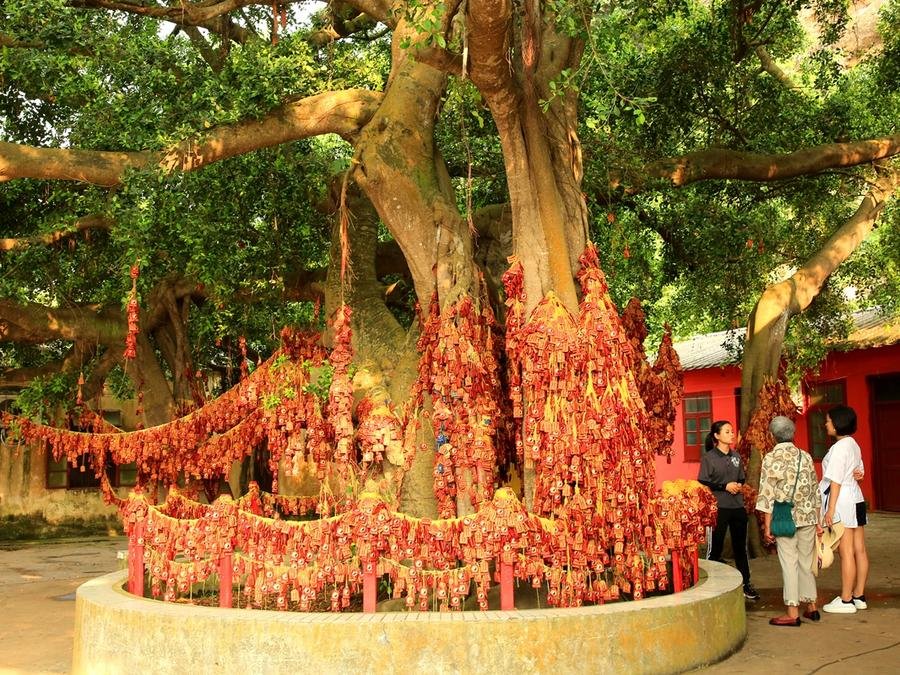
Weizhou Island, situated in the northern part of the South China Sea, has developed a distinctive Hakka culture deeply rooted in its regional heritage. The island’s early inhabitants were part of the Baiyue tribes, which were a branch of the Yue people living in southern China, including regions such as Jiangxi, Fujian, Guangdong, and Zhejiang. Over time, with the continuous migration of Han people from northern China during the Qin and Han dynasties, the Baiyue people experienced significant Hanization. Some were forcibly relocated to the Jianghuai region, while others retreated into the mountains, becoming known historically as the “Mountain Yue” people.
During the Jin and Tang-Song periods, constant warfare in northern China led to economic decline in rural areas, causing large numbers of refugees to migrate south across the Yangtze River. After a series of migrations, some of these immigrants reached Weizhou Island. Here, they coexisted with the indigenous people, eventually merging their Han culture with local traditions in a relatively isolated environment. This blend of cultures gave rise to a unique regional culture centered around Hakka traditions, distinct from surrounding cultural influences.
Mazu Worship (妈祖崇拜)
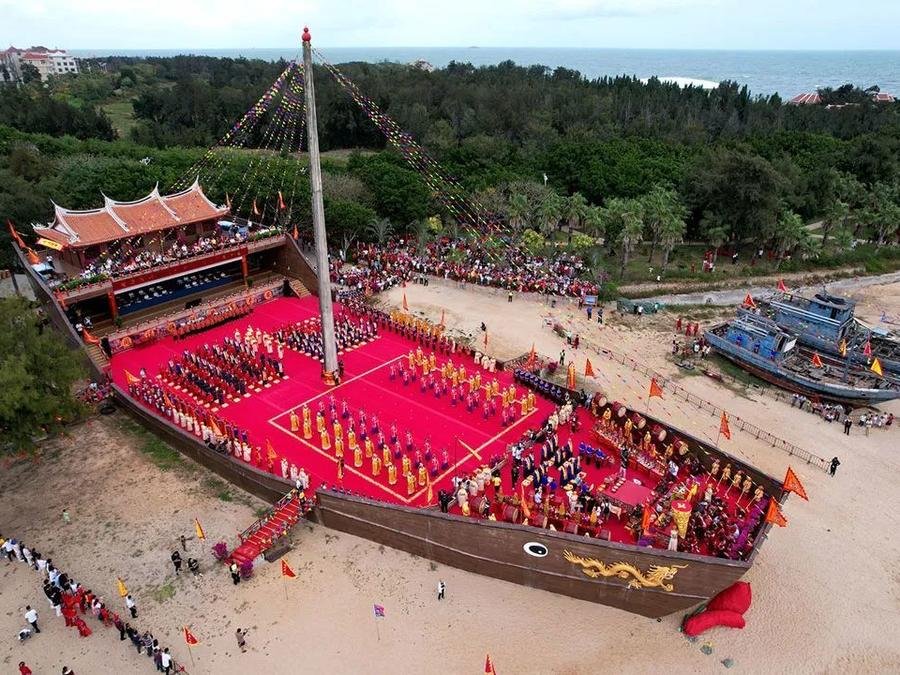
Like other coastal regions of China, the residents of Weizhou Island hold Mazu, the goddess of the sea, in high regard. Locally known as “San Po” (Third Sister), Mazu is celebrated as a protective deity for fishermen and sailors. The San Po Temple, also known as the Mazu Temple or Tianhou Palace, is located on the northern part of the island, beneath volcanic cliffs. The original temple was precariously situated on the cliffs, leading to the construction of a new, safer temple in its place, which mimics the old one in design.
The temple’s striking reddish color and the shade provided by a large ancient banyan tree create a serene atmosphere. During festivals, fishing boats, and safe returns from the sea, locals offer chickens, ducks, fish, and jewels to honor Mazu. Major celebrations occur on the 23rd day of the third lunar month (Mazu’s birthday) and during the harvest season in October. These ceremonies are held to express gratitude for protection and bountiful catches, a tradition locals refer to as “returning blessings” to San Po. An annual pilgrimage to the San Po Temple typically takes place at the end of the year.
Vlog about Weizhou Island
Map and Rcommended Routes
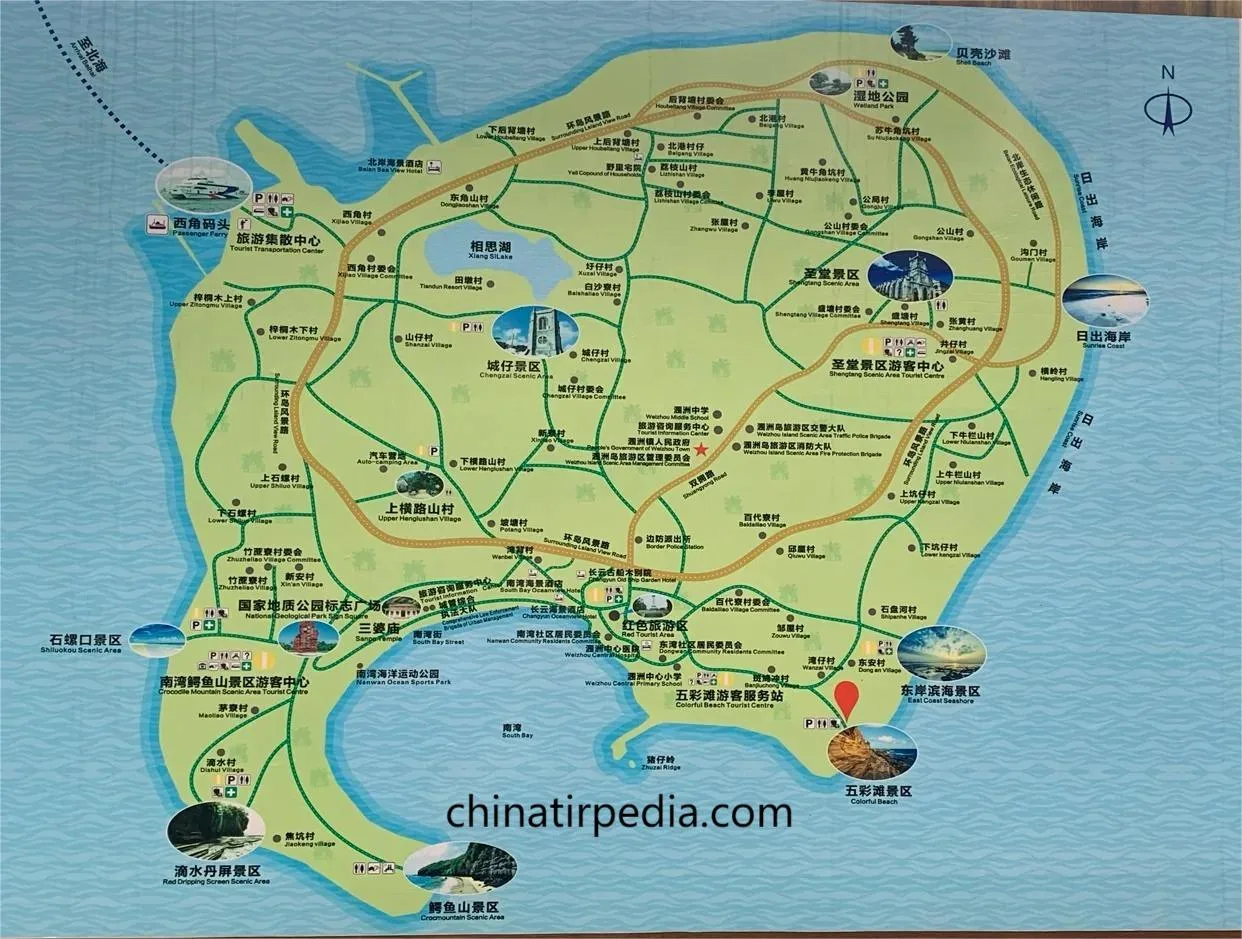
Option 1: Coastal and Cultural Highlights
Turtle Stone Seaside Park (climb the steepest slope in Beihai) – Dasha Beach – Fishing Village – Sea Cucumber Farm – Cathedral – Shiluokou – Coral Reef Area (for diving) – Hundred Beasts Roaring at Sea
Option 2: Volcano and Scenic Spots
Crocodile Mountain Park (for sunrise) – Volcano Crater Remnants – Immortal Cave – Dripping Water Red Screen – Sanpo Temple – Fengbo Ridge (descend the steepest slope in Beihai) – Piglet Ridge
Best Time to Visit
Overall, the best time to visit Weizhou Island is from mid-April to early December. During this period, the weather is pleasant, and the sea views are beautiful.
For those who prefer a quieter and more relaxing experience, consider visiting during the off-peak seasons: April, mid-May to early June, September, mid-October to November, and December. During these times, the temperatures are cooler, UV radiation is lower, and there is no typhoon risk. Additionally, you can avoid the summer peak season, making ticket purchases, accommodation, and dining more convenient without long waits or shortages.
Here’s a summary of sunrise and sunset times at Weizhou Island in table format:
| Event | Locations | Best Time | Months |
|---|---|---|---|
| Sunrise | Colorful Beach, Shipan River Village, Shell Beach | 5:00-6:00 AM | May, June, July, August, September |
| 6:00-7:00 AM | October, November, December, January, February, March, April | ||
| Sunset | Dripping Water Red Screen, Shiluokou, Muya, Blue Bridge | 7:00-7:30 PM | May, June, July, August, September |
| 5:20-6:20 PM | October, November, December, January, February, March, April |

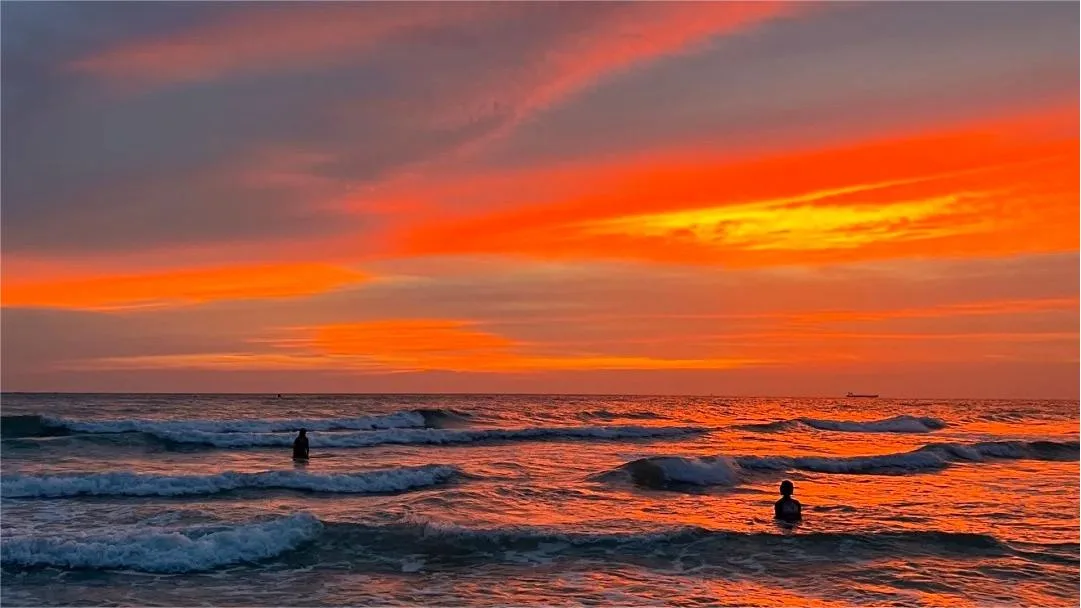





Recently, the weather forecast for Weizhou Island indicated that it would either be cloudy or rainy. But, surprise! The weather by the sea is like opening a blind box! After just half an hour of rain, the sun came out.
Today it was very windy, and the ferry to Weizhou Island was suspended, but I got to see a particularly beautiful sea, so I was still quite happy.
If you also love the sea and enjoy water activities, I highly recommend visiting Weizhou Island. Over the past two days, we experienced six different activities (jet skiing around the peninsula, the little yellow duck ride, flyboarding, surfing, a wobbly sailboat, and diving), and all of them were fantastic! Since it’s the off-season now, the prices for activities on Weizhou Island aren’t too expensive. However, there are many companies and clubs on the island, so it’s good to compare prices.… Read more »
Although I didn’t see the sunny side of Weizhou Island, I got to experience another side of it. The strong winds combined with light rain created towering waves, the sound of the wind howled fiercely, and the branches of the trees swayed wildly. Compared to the calm, sunny days on the island, I actually prefer this kind of atmosphere.
The cold air has arrived at Weizhou Island!!! It has been very windy these past couple of days, and whale watching tours are suspended for now. You can wait a few more days to come back and have some fun!
Yacht tours for whale watching and watching the sunset depart every afternoon. If you don’t see any whales, you can get a refund!
Recently, Weizhou Island is less crowded during the off-season, and prices are low. It’s perfect for bringing the kids, as we can easily find a beach to enjoy the joy of running freely without anyone else around.